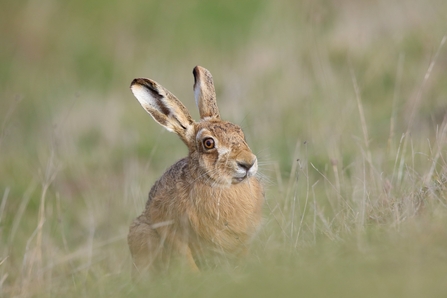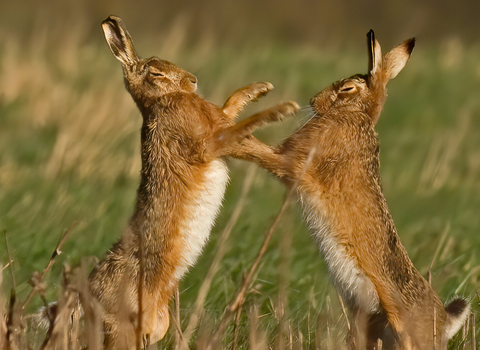If you’re walking near open grassland or farmland in coming weeks keep your eyes peeled and you may be lucky to catch more than a fleeting glimpse; you may even spot them ‘boxing’.
Spring is prime time for seeing brown hares who indulge in some dramatic high speed chases and what appear to be fist fights but are actually a courtship of sorts.
Last week I was walking the dog along a bridleway over some farmland not far from where I live. As I glanced to my left across a huge three-hundred-acre farm field some sudden movement caught my eye: not one, not two, not three, but four hares all seemingly dashing about. It was mayhem. I paused to see how things unfolded. One gave up and disappeared down the hill. While another two continued to pursue the fourth (presumably the female). Eventually another chaser left the game, and the remaining pair also disappeared down the hill towards the small woodland bordering the field. Outcome unknown.
As well as being a favourite of mine, hares have been important to many cultures around the world for a very long time – from the Hare in the Moon of Chinese mythology to the Egyptian hieroglyph for ‘existence’.



